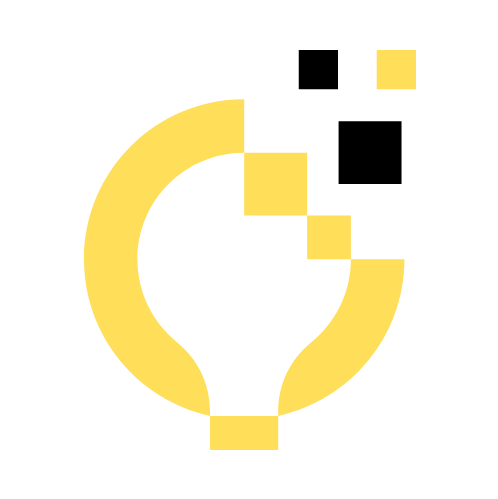Every programmer eventually faces a crucial question which paradigm should I focus on: Functional Programming (FP) or Object-Oriented Programming (OOP)? Both have shaped the evolution of modern software development, and understanding their differences can help you choose the best approach for your projects and career goals.
In 2025, developers often use a hybrid approach, blending the principles of both paradigms to build efficient, scalable, and maintainable software. To decide which one suits you best, it’s important to understand how each works, their strengths, and where they fit in today’s tech landscape.
Table of Contents
What Is Object-Oriented Programming (OOP)?
Object-Oriented Programming revolves around the concept of objects reusable units that contain both data (attributes) and behavior (methods). It’s designed to model real-world systems, making complex software easier to understand and manage.
Languages such as Java, C#, C++, and Python are OOP-friendly. The core principles of OOP include:
- Encapsulation: Bundling data and functions into a single object.
- Inheritance: Reusing code by extending existing classes.
- Polymorphism: Writing flexible and reusable code that adapts to different data types.
- Abstraction: Hiding complex implementation details to simplify use.
OOP is widely used in enterprise software, game development, and app architecture. For instance, frameworks like Spring Boot in Java and .NET in C# rely heavily on object-oriented design patterns to structure large systems efficiently.
What Is Functional Programming (FP)?
Functional Programming, on the other hand, treats computation as the evaluation of mathematical functions. It emphasizes immutability, statelessness, and pure functions, avoiding shared data and side effects.
Languages like Haskell, Scala, Elixir, and F# are known for their functional nature, but modern languages such as JavaScript, Python, and Kotlin now include FP features as well.
Key concepts in FP include:
- Pure Functions: Output depends only on input, with no side effects.
- Immutability: Data cannot be changed once created.
- Higher-Order Functions: Functions can be passed as arguments or returned as values.
- Recursion: Repeating processes through function calls instead of loops.
FP is especially powerful in data processing, AI, and parallel computing, where predictable behavior and modular code are essential.
Key Differences Between OOP and FP
- State Management
- OOP maintains state through objects that store data.
- FP avoids mutable state, preferring immutable data structures.
- Code Reusability
- OOP reuses code through inheritance and classes.
- FP reuses code through pure functions and function composition.
- Debugging and Testing
- OOP can be harder to debug due to hidden states and dependencies.
- FP simplifies testing because functions are independent and predictable.
- Concurrency
- OOP struggles with concurrency due to shared state.
- FP excels in parallelism since functions don’t interfere with each other.
- Performance
- OOP performs better for long-running systems with complex states (e.g., games or simulations).
- FP can be faster for data transformations and concurrent tasks (e.g., AI pipelines or APIs).
When to Use OOP
OOP is ideal for applications that require long-term maintenance, modularity, and real-world modeling. Examples include:
- Enterprise applications using Java or C#
- Mobile and desktop apps using Swift or Kotlin
- Game engines like Unity, which rely on C#’s OOP design
OOP makes code intuitive and scalable when working in large teams where modular structure and clear hierarchy are crucial.
When to Use FP
FP shines in systems that require high scalability, data consistency, and predictable results. It’s common in:
- Data analytics pipelines using Python or Scala
- Machine learning models using TensorFlow or PyTorch
- Web servers built with Elixir or Node.js
Because FP reduces side effects and simplifies concurrency, it’s often preferred for cloud computing and distributed systems.
The Best of Both Worlds
Modern programming doesn’t force you to choose one paradigm exclusively. Most popular languages today combine both. For example:
- Python supports OOP with classes and functional programming with lambda functions.
- JavaScript allows OOP with prototypes and functional programming through map, filter, and reduce.
- Kotlin merges both seamlessly, making it ideal for Android and backend systems.
This blend gives developers flexibility you can use OOP for structure and FP for handling logic, making your code cleaner and more adaptable.
The Future of Programming Paradigms
As systems become more distributed and data-driven, functional programming is gaining popularity for its reliability and scalability. However, OOP remains dominant in enterprise environments due to its familiarity and structured design.
In 2025 and beyond, the smartest developers will not pick sides but master both paradigms, using each where it makes the most sense. AI-powered coding tools like GitHub Copilot even generate hybrid code that mixes Object-Oritented Programming and Functional Programming techniques for optimal performance.
Conclusion
The debate between functional programming and object-oriented programming isn’t about which is better, but which is more suitable for your goals. OOP offers clarity and structure, while FP provides efficiency and predictability.
In the modern programming world, versatility wins. Learning both paradigms allows developers to build more powerful, maintainable, and scalable software. The future belongs to those who understand not just how to code but how to think about coding.
Also Check Top 10 Ultimate Programming Languages to Learn in 2025

1 thought on “Functional vs Object-Oriented Programming – Powerful Guide – 2025”